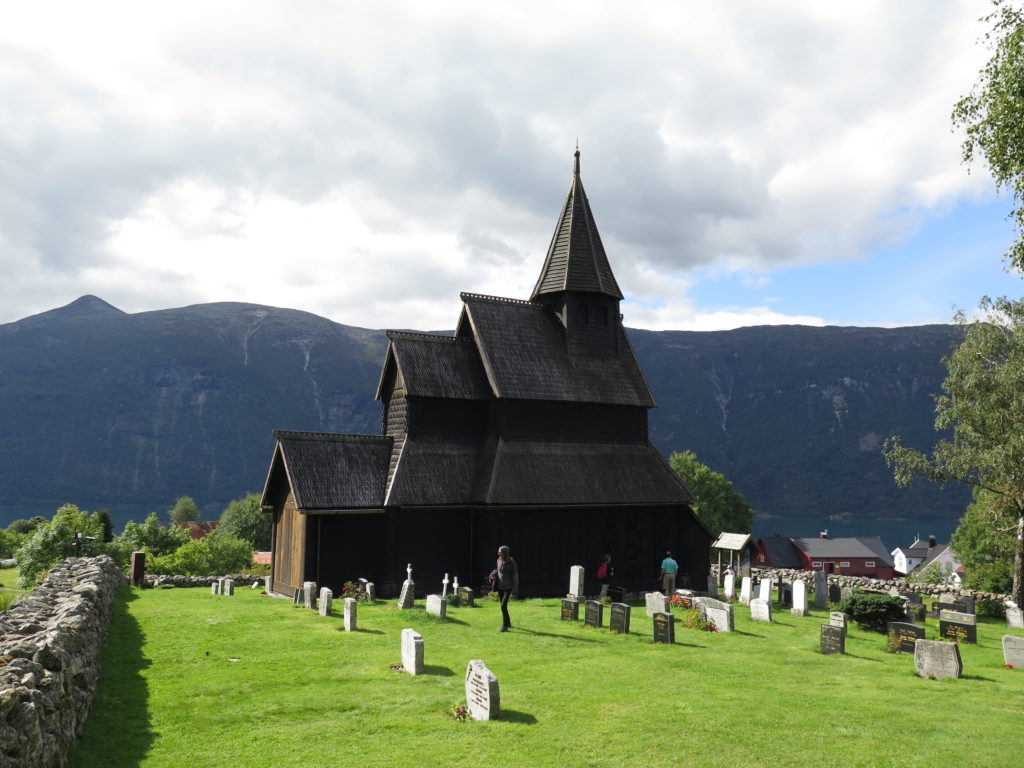A Norwegian Residency
In August 2018 we were invited by the Fortidsminneforeningen (The Norwegian Society for the Preservation of Ancient Monuments) for a residency at Urnes Stavechurch, the oldest existing wooden stavechurch in Norway. Located on the Sognafjorden, the largest and deepest fjord in Norway, the church is at the top of a hill, and accessed through the village of Urnes (pop, about 45ish).
 We spent a few weeks investigating the church and the village, hosted by our friend Sofie Klemetzen. part of our time witnessing the appalling damage made plain by the rapidly-retreating glacier in nearby Jostedal. We’re hoping to return to the area soon, to pay a homage of our own, by taking an apology from the people of Birmingham. As a city who played host to the beginnings of the industrial revolution, we owe the world something.
We spent a few weeks investigating the church and the village, hosted by our friend Sofie Klemetzen. part of our time witnessing the appalling damage made plain by the rapidly-retreating glacier in nearby Jostedal. We’re hoping to return to the area soon, to pay a homage of our own, by taking an apology from the people of Birmingham. As a city who played host to the beginnings of the industrial revolution, we owe the world something.

Back to Urnes. We kept in our minds what Ola from the Fortidsminneforeningen had said – ‘we’re not here to curate the village’ – although that’s also kind of what we did. During the Summer months the church receives 40000 or so visitors and, whilst most of these are respectful – you have to make an effort to get there, it requires a long drive and a ferry ride to visit – we’d heard that some were less so. Toilet facilities are scant and there are tempting apples located around and about, so alfresco ‘relieving’ and apple theft does occur. Unlike many monuments the church isn’t the financial focus to the local economy, locals are mostly farmers, farming apples, raspberries and plums in the main, so crop theft and land abuse don’t go down well. So we had a think about what we might do that would help to alleviate these issues.
We decided that the village and villagers need to be visible, so the whole focus wasn’t the church. There’s a schoolhouse in the village, directly on the route from the ferry to the church. There are insufficient children these days to have it working, children attend schools across the fjord – making quite a long commute, so the schoolhouse lies empty. It’s been restored recently and is a lovely, airy space, but lacked any content or context. In partnership with Sofie from the Fortidsminneforeningen, we started to build an exhibition and community space inside the church.
There was a lot of stuff from the former school stored in the loft of the space and we brought out furniture and items of interest, cleaned them up and placed them around the spaces in the schoolhouse. We unearthed archive photographs, from the county archive and also donated from villagers and hung them on one of the walls. We also took many photographs of our own, both of interesting aspects of the landscape – for instance the village has a very strong link to religion and the raspberries are grown on cross-shaped armatures so we used some of these – as well as close-up images of village objects and people, hung on another wall. We curated these in a ‘salon’style’, echoing the way we’d seen people hang their family photographs in their homes. We took portraits of villagers, and recorded interviews which we added augmented reality functions to – this obviated the need for us to use any tech in the space, as the space would be mostly unattended. We supplied art materials which we stored around the place for children to access.
We introduced this to the villagers,, with an evening ‘launch party’, and pretty much everyone was there. The local people really engaged with the archive pictures and, surprisingly the AR portraits.
It’s about a year on now, and we’re pleased to say that it’s been reported that visitors to the church have been also been visiting the exhibition, and the villagers have been using the space throughout the year. The exhibition has grown, with local people adding their own images to the exhibition – so our approach was successful.
We may not have curated the village, but it seems the village is curating itself.